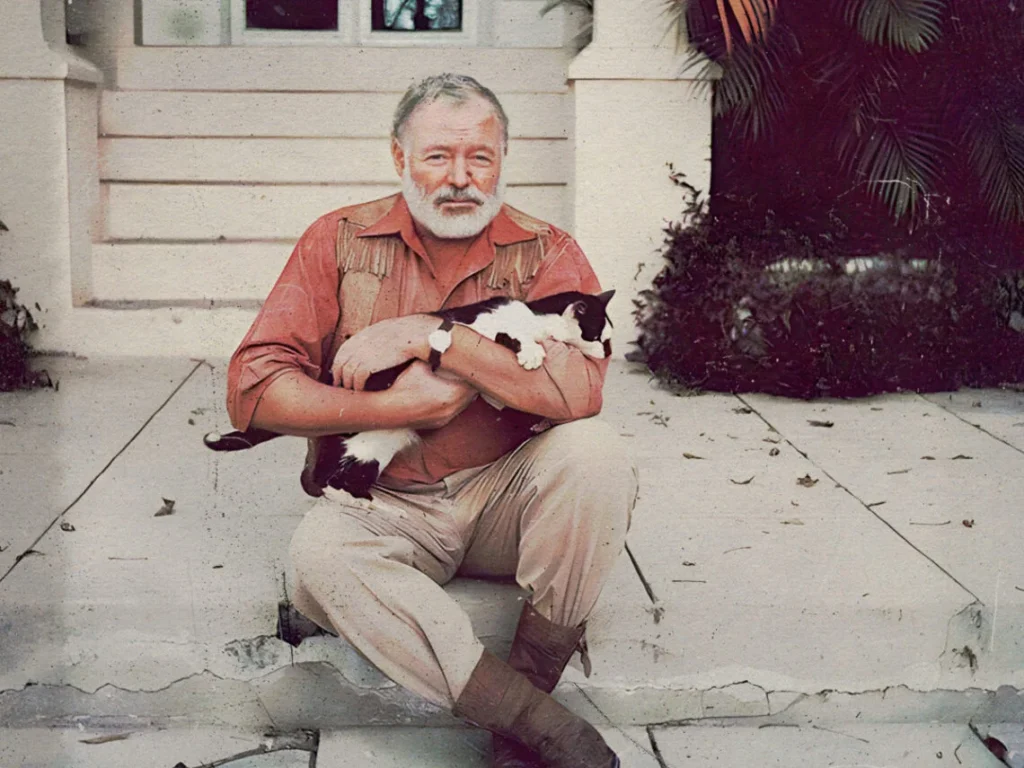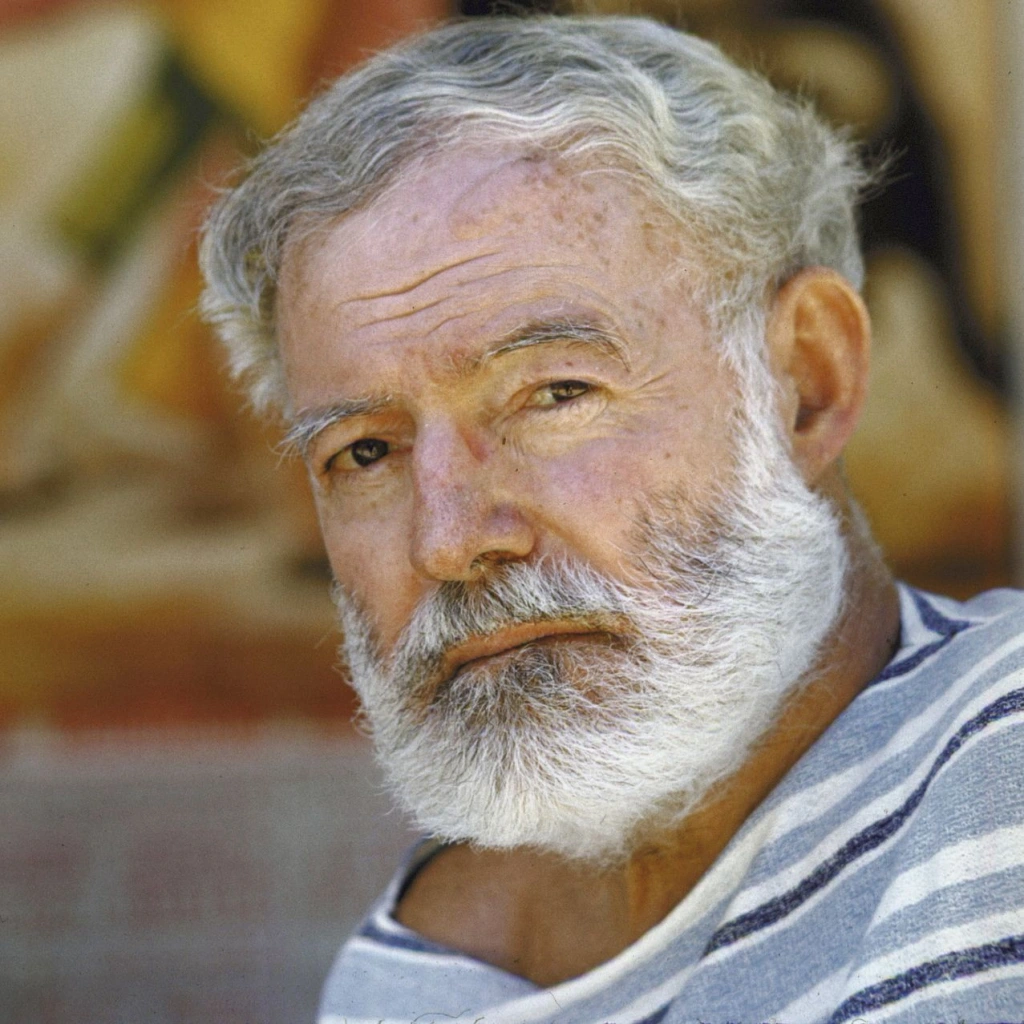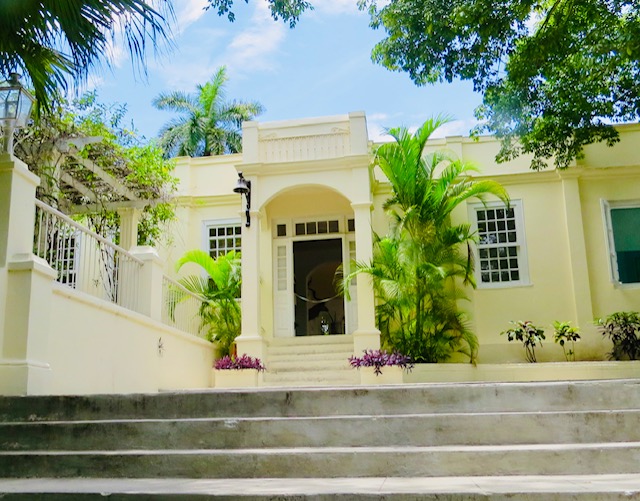
LA HABANA QUE ERNEST HEMINGWAY VIVIO, SU VIDA EN LA CUBA QUE AMO. PHOTOS.
“Amo este país y me siento como en casa; y allí donde un hombre se siente como en casa, aparte del lugar donde nació, ese es el sitio al que estaba destinado”, decía el autor de El viejo y el mar en alusión a Cuba.
Ernest M. Hemingway fue un novelista, cuentista y periodista estadounidense, conocido por su estilo sobrio y económico que influyó en los escritores posteriores del siglo XX, ha sido romantizado por su estilo de vida aventurero y su imagen pública franca y contundente. Algunas de sus siete novelas, seis colecciones de cuentos y dos obras de no ficción se han convertido en clásicos de la literatura estadounidense, y recibió el Premio Nobel de Literatura en 1954.
Ernest Hemingway vivió en su casa habanera en los últimos 22 años de su vida. Cuando se instaló en Finca Vigía –a unos 30 minutos del centro de La Habana- estaba a punto de concluir Por quién doblan las campanas. Al abandonarla para siempre, había recorrido ya como escritor el camino de la fama y merecido el Premio Nobel. En la finca quedaron entonces su Royal portátil, las tumbas de sus perros, unos 50 gatos y los nueve mil volúmenes que atesoró a lo largo de su vida y que muchos años después harían exclamar a García Márquez: “¡Qué biblioteca más rara tenía este hombre!”
LLEGA A CUBA
Hemingway llegó a Cuba en la primera quincena de abril de 1928. Junto a Pauline Pfeiffer, su segunda esposa, hizo aquí el tránsito para Cayo Hueso, donde concluiría Adiós a las armas. Volvió en 1932 para pescar agujas en las aguas cubanas. Regresó en 1933 y escribió la primera de sus crónicas de tema cubano. A partir de entonces no se desvincularía jamás de esta “isla larga, hermosa y desdichada”, como llamó a Cuba en Las verdes colinas de África. El viejo y el mar (1952) es, por excelencia, la novela “cubana” de Hemingway. Parte de la trama de Islas en el golfo (1970) transcurre en Cuba. También en alguno que otro cuento y en muchísimos de sus artículos periodísticos hay alusiones a la Isla. El escenario de Tener y no tener (1937) es cubano en buena medida.
En una ocasión expresó con relación a Cuba: “Amo este país y me siento como en casa; y allí donde un hombre se siente como en casa, aparte del lugar donde nació, ese es el sitio al que estaba destinado”.
Su primer refugio habanero fue en el hotel Ambos Mundos, en la calle Obispo. La habitación 511 de esa instalación, en la que se alojó invariablemente, se conserva intacta. A las cinco de la tarde, después de un día de pesquería, Hemingway se encerraba en su pieza del hotel, pedía la comida y se ponía a escribir. Lo hacía en la cama, a mano, y luego mecanografiaba el manuscrito sin introducir apenas correcciones. En 1958, en su célebre entrevista con George Plimpton, recordaría: “El Ambos Mundos, en La Habana, fue un buen lugar para trabajar”.
A veces en bermudas, con zapatillas vascas, casi siempre sin calcetines y con una camisa ligera, se le veía caminar por la calle Obispo. Evocaría los olores característicos de esa vía en Islas en el golfo…
El escritor se sentía a gusto en el Ambos Mundos, por lo céntrico de la zona y la cercanía con el puerto, donde fondeaba su yate Pilar. Pero a Martha Gelhorn, su tercera esposa, comenzaron a incomodarle la habitación anónima y despersonalizada y la falta de privacidad ante la visita de los amigos del marido. Fue ella la que buscó y encontró Finca Vigía. A Hemingway, al inicio, le desagradó el lugar: quedaba demasiado lejos del Floridita.
TRAGO DE AGUAS SOMERAS
Una buena parte de Islas en el golfo transcurre en ese bar habanero. En esas páginas de la novela, el lector ve deambular a un personaje a quien el escritor llama Liliana la honesta. En la vida real se llamó Leopoldina, una prostituta cubana que “hacía la vida” en el Floridita y que fue el gran amor cubano del novelista. El Floridita es la cuna del daiquiri, y allí Hemingway inventó un daiquiri especial que lleva su nombre.
La Terraza, restaurante marinero del pueblo de pescadores de Cojímar, fue, en La Habana, otro de los sitios preferidos de Hemingway. En el Floridita se reverencia el sitio donde el escritor solía sentarse –la primera butaca de la izquierda de la barra- y en La Terraza, su mesa de siempre, en la esquina izquierda, junto a la ventana.
“Es muy agradable estar aquí”, dice el protagonista de Islas en el golfo en alusión a La Terraza. Y en la misma novela se describe al daiquiri con su sabor y color exactos. “Trago de aguas someras”, lo definía Hemingway.

“UNO VIVE EN ESTA ISLA MEJOR” DIJO HEMINGWAY
En 1949, explicó en una crónica las razones de su larga residencia cubana. Habló, por supuesto, de la Corriente del Golfo, “donde hay la mejor y más abundante pesca que he visto en mi vida”; de las 18 clases de mango que se cosechaban en su propiedad, de su cría de gallos de pelea…y apuntó como al descuido: “Uno vive en esta Isla (…) porque en el fresco de la mañana se trabaja mejor y con mayor comodidad que en cualquier otro sitio.”
Escribía de pie, ya en los últimos años, sobre una piel de lesser kudú, porque así “pensaba con más claridad”. Se levantaba temprano y solo abandonaba su labor cuando llegaba a un punto en que sabía con exactitud lo que sucedería después. Lograr, durante una jornada, unas 500 palabras “limpias” era para él satisfactorio, y jamás acometía directamente a máquina los pasajes más difíciles, pero sí los diálogos.
Finca Vigía fue, dice García Márquez, la única casa verdaderamente estable que el escritor tuvo en su vida. Mary Welsh, su cuarta y última esposa, puso, hasta donde pudo, orden en la finca y en la existencia del novelista. Como éste se quejaba de cuánto lo importunaban los visitantes, Mary dispuso la construcción de la torre de tres pisos aledaña a la casa. La última planta sería el cuarto de trabajo de Hemingway. Subió un día y permaneció allí durante quince minutos, durante los cuales se empeñó, en vano, en redactar una frase. Bajó y nunca más volvió a utilizar el sitio para escribir. Comentó que no podía resistir la soledad.
HARAKIRI CON FUSIL
“Miren como voy a matarme”, decía a sus amigos en Finca Vigía. Colocaba la culata de su escopeta Mannlicher Schoenauer 265 en el piso y apoyaba el cañón en el cielo de la boca. Luego oprimía el gatillo con el pulgar de un pie. Se oía un chasquido seco. Exclamaba sonriente: “Esta es la técnica del harakiri con fusil.”
A su muerte, se leyó en La Habana el testamento de Hemingway. Entre otros legados, traspasaba al Estado cubano la propiedad de Finca Vigía. El viejo escritor, tan remiso a recibir a escritores en su casa, quería que el predio se convirtiera en lugar de reunión de jóvenes intelectuales y artistas y que funcionase allí además un centro de estudios botánicos. El Gobierno Cubano propuso entonces que la finca se convirtiera en museo, sugerencia que aceptó la viuda del narrador.
Pero más que un museo, Finca Vigía continúa siendo la casa de Hemingway. Vacía parece, sin embargo, llena de vida. Da la impresión de que su propietario no está muerto, sino ausente y que de un momento a otro regresará del Floridita o de una cacería.
Dejará entonces en algún sitio su carabina y mirará por encima la correspondencia; en definitiva, en la mesa de la biblioteca de la finca hay un cuño de goma que dice: “Yo nunca escribo cartas”. Ingerirá un trago (“Un buen güisqui es muy agradable, es una de las cosas más agradables de la existencia”) y se colocará ante su Royal portátil para proseguir el trabajo en la rara y ambiciosa novela que nunca llegó a concluir.

THE HAVANA THAT ERNEST HEMINGWAY LIVED, HIS LIFE IN THE CUBA THAT HE LOVED. PHOTOS.
“I love this country and I feel at home; and wherever a man feels at home, apart from where he was born, that is where he was destined to be,” said the author of The Old Man and the Sea, referring to Cuba.
Ernest M. Hemingway was an American novelist, short story writer, and journalist, known for his sober and economical style that influenced later writers of the 20th century. He has been romanticized for his adventurous lifestyle and his frank and forceful public image. Some of his seven novels, six collections of short stories, and two works of nonfiction have become classics of American literature, and he received the Nobel Prize for Literature in 1954.
Ernest Hemingway lived in his Havana home for the last 22 years of his life. When he settled in Finca Vigía – about 30 minutes from the centre of Havana – he was about to finish For Whom the Bell Tolls. When he left for good, he had already made his way to fame as a writer and had earned the Nobel Prize. His portable Royal, the graves of his dogs, some 50 cats and the nine thousand volumes that he had collected throughout his life remained on the estate, and which many years later would make García Márquez exclaim: “What a strange library this man had!”

HE ARRIVES IN CUBA
Hemingway arrived in Cuba in the first half of April 1928. Together with Pauline Pfeiffer, his second wife, he made the journey here to Key West, where he would finish A Farewell to Arms. He returned in 1932 to fish for marlin in Cuban waters. He returned in 1933 and wrote the first of his chronicles on Cuban themes. From then on, he would never disassociate himself from this “long, beautiful, and unfortunate island,” as he called Cuba in The Green Hills of Africa. The Old Man and the Sea (1952) is, par excellence, Hemingway’s “Cuban” novel. Part of the plot of Islands in the Gulf (1970) takes place in Cuba. There are also allusions to the island in some short stories and in many of his newspaper articles. The setting of To Have and Have Not (1937) is largely Cuban.
On one occasion, he said in relation to Cuba: “I love this country and I feel at home; and wherever a man feels at home, apart from where he was born, that is the place he was destined for.”
His first refuge in Havana was at the Hotel Ambos Mundos, on Obispo Street. Room 511 of that establishment, where he invariably stayed, is preserved intact. At five in the afternoon, after a day of fishing, Hemingway would lock himself in his hotel room, order food and start writing. He would do it in bed, by hand, and then type up the manuscript without making any corrections. In 1958, in his famous interview with George Plimpton, he would remember: “The Ambos Mundos, in Havana, was a good place to work.”
Sometimes in Bermuda shorts, with Basque slippers, almost always without socks and with a light shirt, he could be seen walking down Obispo Street. He would evoke the characteristic smells of that street in Islands in the Gulf…
The writer felt comfortable at the Ambos Mundos, because of the central location of the area and the proximity to the port, where his yacht Pilar was anchored. But Martha Gelhorn, his third wife, began to feel uncomfortable with the anonymous and impersonal room and the lack of privacy when her husband’s friends visited. It was she who sought out and found Finca Vigía. At first, Hemingway disliked the place: it was too far from the Floridita.
A GLASS OF SHALLOW WATERS
A good part of Islands in the Gulf takes place in this Havana bar. In these pages of the novel, the reader sees a character wandering around whom the writer calls Liliana the honest. In real life, her name was Leopoldina, a Cuban prostitute who “made a living” at the Floridita and who was the novelist’s great Cuban love. The Floridita is the birthplace of the daiquiri, and there Hemingway invented a special daiquiri that bears her name.
La Terraza, a seafood restaurant in the fishing village of Cojímar, was another of Hemingway’s favorite places in Havana. At the Floridita, the place where the writer used to sit is revered – the first chair on the left of the bar – and at La Terraza, his usual table, in the left corner, next to the window.
“It is very pleasant to be here,” says the protagonist of Islands in the Gulf, referring to La Terraza. And in the same novel, the daiquiri is described with its exact flavor and color. “A drink of shallow water,” Hemingway defined it.
“ONE LIVES BETTER ON THIS ISLAND” SAID HEMINGWAY
In 1949, he explained in a chronicle the reasons for his long Cuban residence. He spoke, of course, of the Gulf Stream, “where there is the best and most abundant fishing I have ever seen in my life”; of the 18 kinds of mangoes that were harvested on his property, of his breeding of fighting cocks… and he noted as if by accident: “One lives on this Island (…) because in the cool of the morning one works better and more comfortably than anywhere else.”
He wrote standing up, in his later years, on a lesser kudu skin, because that way he “thought more clearly.” He got up early and only abandoned his work when he reached a point where he knew exactly what would happen next. Achieving, during a day, some 500 “clean” words was satisfactory for him, and he never directly attacked the most difficult passages on type, but he did the dialogues.
Finca Vigía was, says García Márquez, the only truly stable house that the writer had in his life. Mary Welsh, his fourth and last wife, put, as far as she could, order in the estate and in the novelist’s life. Since he complained about how much visitors bothered him, Mary arranged the construction of the three-story tower next to the house. The top floor would be Hemingway’s workroom. He went up one day and stayed there for fifteen minutes, during which he tried, in vain, to compose a sentence. He went down and never used the place to write again. He commented that he could not bear the solitude.

HARAKIRI WITH A RIFLE
“Look how I’m going to kill myself,” he told his friends at Finca Vigía. He would place the butt of his Mannlicher Schoenauer 265 shotgun on the floor and rest the barrel on the roof of his mouth. Then he would press the trigger with the thumb of one foot. A dry click could be heard. He exclaimed with a smile: “This is the technique of harakiri with a rifle.”
Upon his death, Hemingway’s will was read in Havana. Among other bequests, he transferred the ownership of Finca Vigía to the Cuban State. The old writer, so reluctant to receive writers in his house, wanted the property to become a meeting place for young intellectuals and artists and to also have a center for botanical studies. The Cuban government then proposed that the estate be turned into a museum, a suggestion that the narrator’s widow accepted.
But more than a museum, Finca Vigía continues to be Hemingway’s house. Empty, it seems, however, full of life. It gives the impression that its owner is not dead, but absent and that at any moment he will return from the Floridita or from a hunt.
He will then leave his rifle somewhere and look over the correspondence; in short, on the table in the estate’s library there is a rubber stamp that says: “I never write letters.” He takes a drink (“A good whiskey is very pleasant, it is one of the most pleasant things in existence”) and sits down in front of his Royal laptop to continue working on the strange and ambitious novel that he never finished.

Agencies/ Wiki/ Lecturas/ Ciro Bianchi/ Extractos/ Excerpts/ Internet Photos/ Arnoldo Varona/ www.TheCubanHistory.com
THE CUBAN HISTORY, HOLLYWOOD.




